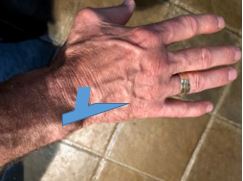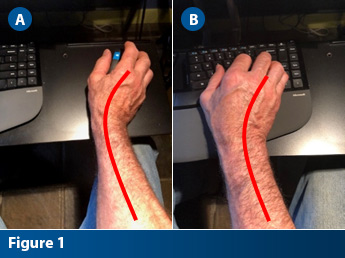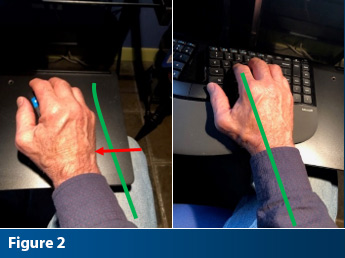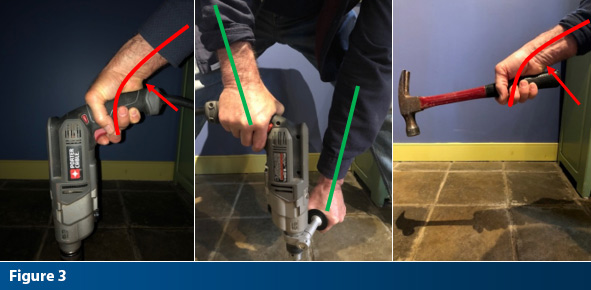Ouch, My Wrist Hurts! Injury to the TFC Complex from Power Drills to Keyboarding

The anatomy of the wrist and hand is quite remarkable. This amazing instrument was described in our previous safety blog, Our Hands are Incredible Tools - check it out!
But there’s even more to this structure, and it can be the source of workplace injury. The Triangular Fibrocartilage Complex or more simply, the TFCC, is a small structure at the wrist on the little finger side of the hand (indicated by blue in the image below). It stabilizes the wrist where it attaches to the forearm. Understanding a little about this area and how is it exposed in the office and manual material work environments might just help you prevent an injury.

In the office, the root cause of injury is often overuse and awkward posture of the wrist and hand. This most commonly takes place when using the keyboard and mouse. With an extended reach to the mouse and pivoting on the wrist the worker will often deviate the wrist to the little finger side as seen in Figure 1-A. This will compress the TFCC repeatedly and eventually lead to damage. Likewise, using a standard keyboard through postural habit will deviate the wrist to the little finger side as seen in Figure 1-B. This also leads to compression of the TFCC.

The best solution for the office worker is to reduce any wrist deviation with a shaped keyboard and reach to the mouse. Proper height of the mouse and keyboard are also important when considering good wrist health.

When it comes to working with tools or handling material, frequently workers are exposed to TFCC tears through violent torquing of the wrist. This can occur if a worker is using a power drill or hole saw and the tool becomes jammed. This transfers the tool’s torque into the user’s wrist and hand. Often the employee is not prepared for the tool force; the violent torque can stretch and/or tear the TFCC. The hand is typically fisted and deviated to the little finger side (see image 1 below).
It’s not just power tools that can expose the TFCC to excessive force. The repeated use of a manual hammer can have the same affect. The fisting along with the manual force to drive a nail can expose the TFCC to repeated stress. Missing the object or nail will increase the compression and torque to the TFCC.

The best prevention is worker education. For power tools the use of an auxiliary torque handle to reduce the force on one hand will reduce the risk (image 2 above). The auxiliary handles will make the larger heavier tool more balanced. For hammering placing the work at proper height and reducing the extremes of wrist deviation will improve the health of the TFCC. Consider the use of nail guns and eliminate the use of repeated manual hammering.
For more information, check out all of MEMIC’s ergonomic tools and resources within the Safety Director

